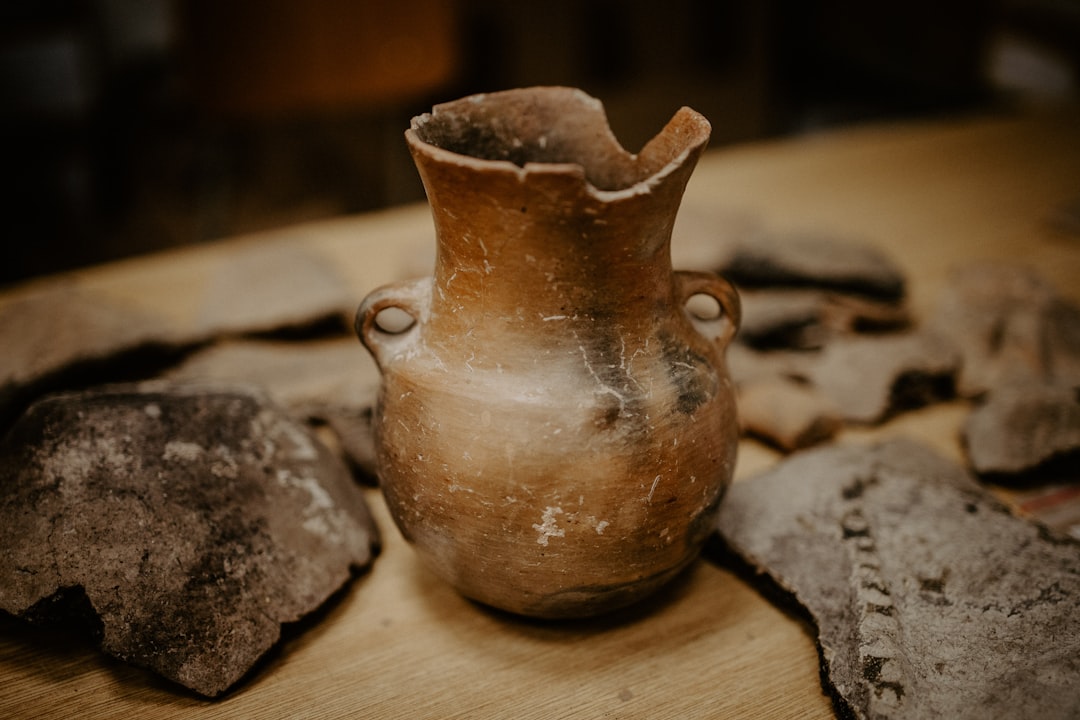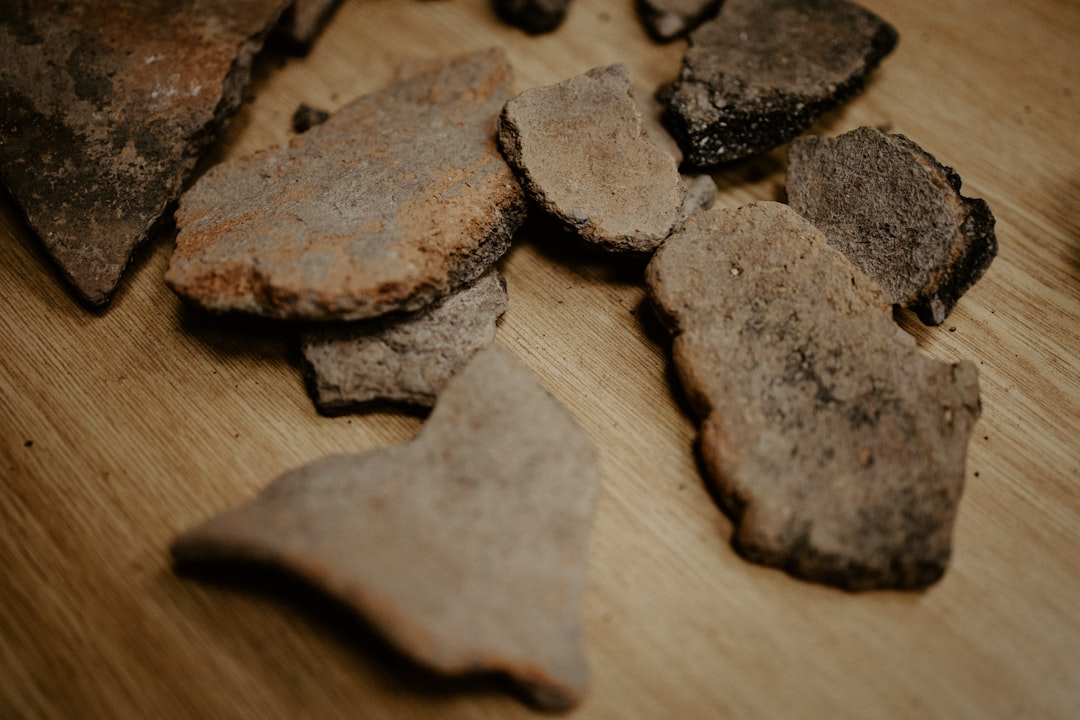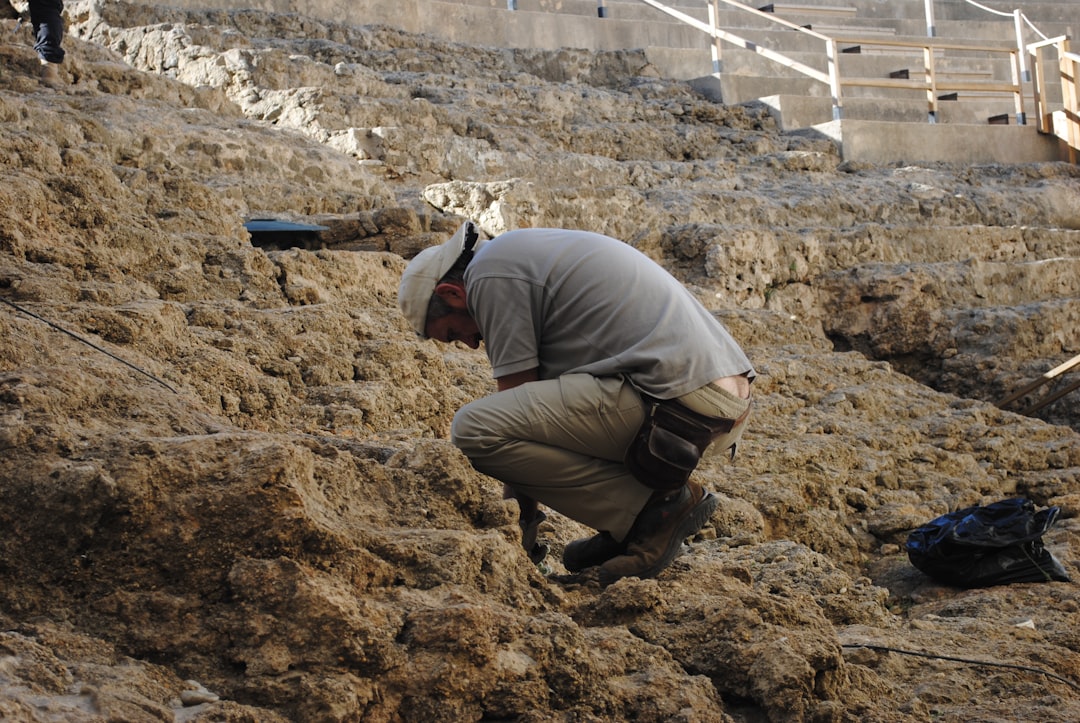'New'/Processual Archaeology
An Introduction
This week we have something new - a slight detour. The focus here is on the so-called 'New' or Processual Archaeology - one of several competing ways to 'do' archaeology. What was it, how was it different, and was it in fact 'New'? If we want to get to grips with early medieval English history, we need to also be archaeologists, so these are more than idle questions.
The text here is taken from a piece of coursework I wrote for my master’s degree some time ago. I certainly do not pretend it is perfect, and I would happily receive feedback - I need to continue to learn too, and theory has never been my strong suit!
Now, I appreciate this is probably incredibly boring for some people - feel free to skip this newsletter if you prefer, and normal service will return soon! But if you’re interested in the ways we think with archaeology - the way we structure our understanding - then read on.
Although broadly maligned by Hodder and the Post-Processualists in the 1980s, New (or Processual) archaeology is often identified as a substantial shift in both theory and methodology. Led by Binford, Renfrew and Clarke it reacted against the perceived shortcomings of Culture-Historical archaeology, embodied by Childe and (more openly politically) Kossina. Fundamentally, New Archaeology proposed a move towards a scientific and anthropological archaeology. An explicitly ‘explanatory’ goal was adopted, employing a hypothetico-deductive methodology. Based on a fundamental re-evaluation of the notion of culture, systems thinking was extended as a means of achieving explanation. Alongside this developed notions of generalized laws between societies that analysed explanation on a much larger scale, and Middle-Range Theory that employed ethnological data to test hypotheses.
Binford stressed a new motivation for archaeology: explanation. ‘We are no longer asking merely what’, Willey and Phillips had suggested, ‘but also how and even why’ (Binford 1968a, 7). Archaeology and anthropology shared the common goals of explanation of human behaviour and, instead of simply relying on anthropological models, ‘archaeology must accept a greater responsibility in the furtherance of the aims of anthropology’ (Binford 1962, 224). In this Binford mirrored Willey and Phillips’ declaration that ‘archaeology is anthropology or it is nothing’ (Willey and Phillips 1958, 2). This, argues Clarke, is a ‘loss of disciplinary innocence’ (Clarke 1973, 6).

In aim, New Archaeology therefore differed from its earlier counterpart. Certainly, Culture-Historical archaeology can be accused of being broadly descriptive rather than explanatory. Pre-dating radio-carbon dating, a focus on simple typologies had been necessary to create chronology (Harris and Cippolla 2007, 18) and focus rested on ‘generalized narratives of the changes in composition of the archaeological record’ (Binford 1968a, 11). In doing so they geographically and chronologically pigeon-holed the ‘complex mosaic of cultures’, constructing histories.
Moreland points towards a predominance of this kind of thinking in the study of early medieval brooches: they are classified into ethnic typologies and then identified as simple indicators of period or migration (Moreland 1991, 26). New data simply fitted within pre-existing models. We might question the extent to which New Archaeology achieved its explanatory goal. This formed a central point of later Post-Processual criticism - if systemic thinking disguised the (gendered, political) individual, did it ever actually explain anything about them (Moreland 1991, 14)? This is, however, largely moot: that explanation was a clear goal of the New Archaeologists is clear, and such an explicit declaration separates it from its Culture-Historical predecessor. How did the New Archaeologists go about this focus?
Fundamental to this new aim was an evolution in the understanding of the concept of culture. For the Culture-Historical archaeologists, culture was normative: ‘a set of shared ideas about what forms things take’ (Flannery 1967, 119). Culture was mentalist and idealist in that it focused primarily on people’s thoughts (Johnson 1999, 65). Material culture was subsequently a physical manifestation of ‘the way things are done’ (Flannery 1967, 119), and Childe identifies archaeological cultures by artefact types ‘constantly occurring together’ (Trigger 2014, 244). The New Archaeologists, conversely, saw culture as ‘the extra-somatic means of adaptation for the human organism’ (Binford 1962, 218). In regard to both social and environmental factors, culture is adapted to meet needs: culture is functionalist. This difference in thinking is classically illustrated in the disagreement between Bordes and Binford over the Mousterian Question, crystalising ‘conflicting Old and New World paradigms’ (Wargo 2009, 104). Central to this debate was how best to understand variation in Mousterian era stone tools. Bordes embodied the Culture-Historical approach, ascribing assemblage variation to different tribes (Bordes and de Sonneville-Bordes 1970, 64). Conversely, Binford tied variation in assemblages at Combe Grenal (France) closely to ‘adaptive readjustments’ resulting from climate variation (Binford and Binford 1969, 84). It is on this fundamental difference in definition over culture that New Archaeology’s departure from its predecessor is grounded - the potential now existed to examine function.

This notion of culture as adaption is made clear by the New Archaeologists’ adoption of systems thinking. Borrowed originally from cybernetics, culture is understood as a ‘behavioural system of self-regulating and inter-related subsystems’, each adapted to their wider environment as discussed above (Schiffer 1972, 157). Rather than a ‘summation of traits’’ under the Traditional archaeologists, here it was understood as part of a larger interdependent whole (Binford 1968a, 26). New Archeologists disagreed on the scale and number of these subsystems, but Clarke suggests this is largely arbitrary (Clarke 1994, 44). Binford, in his 1962 article Archaeology as Anthropology, adopts a very narrow outlook, explicitly referencing only three over-arching examples: social, technological and ideological (Binford 1962, 218). Artefacts, he suggests, can be fitted primarily within one of these subsystems, allowing their primary relevance to be identified. By later in his career, however, Binford acknowledged that artefacts often operated within all three of these subsystems simultaneously (Trigger 2014, 398). More recently, Cognitive Archaeology has attempted to take onboard Post-Processual criticism of failing to acknowledge thought by portraying cognitive elements as a further subsystem (Flannery and Marcus 1996, 350). However, subsystems are often identified more broadly: Flannery identifies the population density of rabbits in a systemic relationship with hunting patterns and trade, for example (Flannery 1967, 120).
Not only was systems thinking a new way of understanding culture, it facilitated a more complex explanatory framework, directly in opposition to Culture-Historical description, in two main ways. Firstly, it embodies what Flannery framed as a shift from cultural history to cultural process (Flannery 1967). The normative mentalist conception of culture failed to explain material cultural variation as anything more than abstract ideas in the minds of past peoples (Johnson 1999, 67). At most, Childe and his ilk were capable of ‘abstracting from cultural products the normative concepts extant in the minds of men now dead’ (Binford 1965, 203). This, it was argued by New Archaeologists, is hardly fruitful explanation (Ibid., 209). In contrast, a systemic understanding of culture provided functionalist explanations for material cultural forms and could explain the complex processes at work. Flannery, for example, explains similarities in the ‘implements and facilities’ of early Mesoamerian sites, despite climatic difference, as a result of adaption to subsystems around five crucial animal and plant resources (Flannery 1968, 229-30). Material culture is understood as a physical embodiment of a subsystem, and the archaeologist is thus capable of exploring past social dynamics from the archaeological record (Binford 1962, 218-9).

Secondly, and as a result of this focus on process, systems thinking facilitated a clearer explanation of periods of cultural change. Culture-historical archaeology had largely ascribed cultural change to the process of diffusion of cultures: archaeological records altered as a result of the migration of peoples or idea. However, this ‘aquatic view of culture’ failed to explain the mechanisms of change (Binford 1965, 204): Binford criticised Sabloff and Willey for failing to justify how invasion caused the collapse of the Maya (Binford 1968b, 270). Secondly, as Aberle has pointed out, it leaves the archaeologists as paleo-psychologists, a task they are poorly trained for and a further reason for limited capacity to explain (Binford 1965, 204).
Instead, through systems thinking, cultural change can be practically and extensively tied to variation in interconnecting subsystems. A change forces a period of adjustment, leading to a new equilibrium and a new adapted material culture. Crucially, this relationship between subsystems and artefacts can be interpreted from either direction. Working from material-cultural remains, Binford’s analysis of copper tools’ participation in sub-systems in the Old Copper Complex facilitated a broader pattern of societal change to be identified (Binford 1962, 220). A shift towards a (largely archaeologically invisible) complex social stratification was posited as a result of systemic change illustrated by variation in copper tool primary functioned (Ibid., 223). Conversely, Flannery works from zooarchaeologically attested observations of systemic change to suggest a resultant widescale material-cultural change. The evolution from migration to settlement in prehistoric Mexico is posited as a possible positive feedback loop in the subsystem of maize cultivation - genetic mutations in maize act as a ‘kick’ promoting longer-term planting by larger ‘macro-bands’, and the need for permanent settlement (Flannery 1968, 230).
Gilchrest, quite rightly, suggests systems thinking impacted early medieval archaeology more strongly than later periods: a relative dearth of written sources necessitated a systemic approach to understand cultural processes (Gilchrist 2009, 387). Indeed, an enthusiastic adoption of systems theory is evident in the work of Hodges, and his article on archaeological theory is a battle-cry to medieval archaeologists to adopt New Archaeological practices (Hodges 1982b). It has been pointed out that Hodges’ model for the birth of emporia in the seventh century draws on subsystems of power and legitimacy: control of prestige goods by ‘big men’ led to the funneling of trade through specific sites, and subsequent urban growth (Gilchrist 2009, 387). More explicitly, Hodges casts the decline of the emporia in the ninth century as a result of the collapse of economic (sub)systems drawing in Arabic silver, and explicitly rejects the simplistic monocausal explanation of Viking raiding (Hodges 1982a, 152). Adopting a systems-based understanding of culture ‘stimulates inquiry into the mechanisms that counteract change’ in an explanatory manner far more complex than its Culture-Historical predecessors (Flannery 1968, 324).
New Archaeology’s explanatory potential came also from its belief in itself as an objective, positivist science, in a broad departure from the inductive reasoning of Culture-Historical archaeology. Post-Processualism’s later critique of Processualism’s objectivity, in light of the intermingling of theory and data, must not dull out appreciation of its significance (Hodder and Hutson 2012, 16). Methodological advancements, particularly computing and isotope analysis, facilitated supposedly objective observations (Clarke 1973, 9). More importantly, to achieve a focus on explanation through systems, New Archaeology instituted a ‘rigorous testing of deductively drawn hypotheses’ (Binford 1968a, 14). Instead of judging the validity of a model on the reliability of the archaeologist who proposed it, we should construct hypotheses that can be practically tested against archaeological data (Ibid., 16). Scientifically tested and ‘proved’, genuine explanation could be possible.
Crucial in testing hypotheses were Middle-Range Theories, and here substantial difference with the Culture-Historical approach is also evident. Championed most vocally by Binford, these provided the practical means of correlating archaeological evidence in the present with past behavioural patterns. Certain universal subsystem were suggested as producing certain material outcomes, and similar subsystems could be compared across cultures (Johnson 1999, 55). Ethnoarchaeology proved the most popular method to construct Middle Range Theories, and New Archaeology’s use of ethnographic data marks a further difference from and Culture-Historical archaeology. New Archaeology, again explicitly focused on an explanatory motivation, used ethnological data to construct a theory of material culture production patterns, and subsequently tested this against the archaeological data to confirm hypotheses about past behaviour (Flannery 1967, 120-1). This was a reversal of Culture-Archaeology’s inductive attitude towards ethnographic analogy, where similarity was assumed through simple material-cultural comparison with modern societies (Salmon 1976, 376-7 ). Binford’s work with the Nunamuit is the most famous case, illustrating how modern butchering patterns manifested themselves in material remains. Returning to the Mousterian Question, Binford sought to test the patterns of distribution implied by his ethnographic research against the prehistoric record, and subsequently test hypotheses of behaviour (Johnson 1999,58).
Experimental archaeology provided another method of exploring how actions analogous to those undertaken by past societies produce physical remains. The Tucson Garbage Project explored refuse patterns as a reflection of consumption behaviour (Imamichi 2012, 303). A further example is the reconstructed early Anglo-Saxon village at West Stow, Suffolk; the accidental burning of a reconstructed Grubenhaus allowed for an understanding of the process of building destruction (associated with building life-cycles) (Tipper 2012, 171). Particularly relevant here are questions of archaeological survivability. New Archaeology thus illustrates a fundamentally different (and far more engaged) relationship with ethnographic (and experimental) data than Culture-Historical approaches. This, used against the archaeological record to test hypotheses, marks a substantial investment in making archaeology explanatory in a scientific process.
As a result of consistent testing of hypotheses and Middle Range Theories, New Archaeology sought to extend explanation to a much larger scale by establishing broad laws of human action (Trigger 2014, 400). It held the potential to be generalizing: if a culture’s material traits could be ascribed to adaption to a certain subsystem, similarity in those subsystems is relevant irrespective of specific cultural differences. Take, by way of example, Schiffer’s focus on patterns of refuse. What emerges is an attempt at broad assumptions (all things being equal) on the life-process of items and the suggestion of ‘explicit, logically related credible laws about the formation processes of the archaeological record’ (Schiffer 1972, 163). Concrete laws of human activity are suggested (although tentatively, to be further tested): with increased population comes a decrease in correspondence between areas of use and discard for all items (Ibid., 162). The dangerously uniformitarian assumptions here seem often to have been passed over (Smith 2014, 4930). New Archaeology’s concept of explanation, then, was looking to identify ‘secure, unambiguous relationships’ between material culture and behaviour (Hodder and Hutson 2012, 14). This generalizing stance reflects New Archaeology’s proposed motivation of actively contributing to anthropological theory and explanation.
This potentially universal scale of explanation is certainly a departure from Culture-Historical approaches, which had tended to particularize and focus on one context (Trigger 2014, 308). This builds, ultimately, on the work of Boas who had suggested culture as ‘a unique entity that had to be understood on its own terms’ (Ibid., 219). In its scientific procedure obtaining its proposed explanation, with the testing of hypotheses, in conjunction with ethnographic data and the subsequent establishment of laws, New Archaeology further separated itself from Culture-Historical archaeology.
It is thus broadly clear, methodologically and theoretically, that New Archaeology varied in many ways from the preceding school of thought with regards to its explanatory goal, systemic thinking and understanding of culture. The extent to which this represents a genuine ‘departure’ is, however, less clear. Paradigms are rarely monolithic, and Rice points out that New Archaeology never represented a single unified intellectual movement (Rice 1985, 127). It is wrong, therefore, to see the work of Binford as the sole representation of the New Archaeological school (as has been made clear by the examples employed throughout), and difficult to speak of simplistic differences between schools of thought. New Archaeology’s critique of its predecessor broadly generalised a diverse set of theoretical standpoints, many of which prefigured crucial Processual arguments. Of this Binford himself appears to have been aware (Binford 1968a, 7). For example Clark, in the 1953 Rickett Memorial Lecture, had represented culture in a broadly systemic manner (Smith 2014, 5257). An ‘implicit kind of functionalism’ had been evident in prehistoric archaeology since the late nineteenth century: Trigger identifies Fox’s The Personality of Britain as an important contribution (Trigger 1968, 531). Indeed, the pejorative accusation of ‘Traditional’ archaeology seems often to have been extended to academics who followed the ‘functional-processual trends’ but objected to certain aspects of Binford’s models (Trigger 2014, 394). That Binford’s contribution was important in expressing these developments as a unified whole is clear; that his work was a departure from previous work in any radical sense is not.
Secondly, to classify this as a departure is to underplay the cumulative nature of archaeological theory. Pearce and Bintliff, in exploring the ‘Death of Theory’, argue against a paradigmatic understanding of theory development in favour of a new ‘eclecticism’ (Pearce and Bintliff 2011, 4). Culture-Historical methods, like the construction of typologies, continued in use under the New Archaeologists until the present, especially in Medieval archaeology. It seems likely then, as Flannery had hoped, that ‘there is a place in American archaeology for both approaches’ (Flannery 1967, 121). On two accounts, then, ‘departure’ is an unhelpful conceptual framework in which to understand New Archaeology’s contribution to theory. Instead, we might best frame it as a cumulative evolution.
In conclusion, New Archaeology was ‘new’ in its explicitly explanatory goal, but also in its process of going about achieving this. Systems thinking facilitated a focus on process and adaption, particularly providing in-depth explanations for cultural change that the Culture-Historical archaeologists had ascribed to simple diffusion. This stemmed from fundamentally different definitions of culture - mentalist versus adaptive. Generalizing laws, tested and reinforced by ethnoarchaeological research and Middle Range Theories, gave archaeology a much wider scale of applicability for this new explanation. As Binford had wished, archaeology could now actively contribute to anthropological theory. However, we must not overly stress the degree to which this represents a strong paradigmatic shift. Many of New Archaeology’s central ideas had been developing for some time, and many Culture-Historical methods continue to be used. It is proposed here instead that New Archaeology can more productively be seen as an evolution out of Culture-Historical archaeology, as a process of cumulative knowledge development, rather than a simple departure.
Bibliography
Binford, L. R. (1962) Archaeology as Anthropology. American Antiquity 28.2: 217-25.
Binford, L. R. (1965) Archaeological Systematics and the Study of Culture Process. American Antiquity 31.2: 203-10.
Binford, L. R. (1968a) Archaeological Theory and Method. In S. R Binford and L. R. Binford (eds.) New Perspectives in Archaeology: 1-32. Chicago, Aldine.
Binford, L. R. (1968b) Some Comments on Historical versus Processual Archaeology. Southwestern Journal of Archaeology 24.3: 265-75.
Binford, S. R. and Binford, L. R. (1969) Stone Tools and Human Behavior. Scientific American 220.4: 70-87.
Bordes, F. and de Sonneville-Bordes, D. (1970) The Significance of Variability in Palaeolithic Assemblages. World Archaeology 2.1: 61-73.
Clarke, D. (1973) Archaeology: The Loss of Innocence. Antiquity 47.185: 6-18.
Clarke, D. (1994) Culture as a System with Subsystems. In S. M Pearce (ed.) Interpreting Objects and Collections. London, Routledge.
Flannery, K. V. (1967) Culture History vs. Culture Process: A Debate in American Archaeology. Scientific American 217.2: 119-22.
Flannery, K. V. (1968) Archaeological Systems Theory and Early Mesoamerica. In B. J. Meggers (ed.) Anthropological archeology in the Americas: 222-34. Washington, The Anthropological Society of Washington.
Flannery, K. V. and Marcus, J. (1996) Cognitive Archaeology. In R. Preucel and I. Hodder (eds.) Contemporary Archaeology in Theory. Oxford, Blackwell.
Gilchrist, R. (2009) Medieval Archaeology and Theory: A Disciplinary Leap of Faith. In R. Gilchrist and A. J. Reynolds (eds.) Reflections: 50 Years of Medieval Archaeology, 1957- 2007: 385-408. Leeds, Maney Publishing.
Hodder, I. and Hutson, S. (2012) Reading the Past: Current Approaches to Interpretation in Archeology. Cambridge, Cambridge University Press.
Hodges, R. (1982a) Dark Age Economics: The Origins of Towns and Trade AD.600-1000. London, Duckworth.
Hodges, R. (1982b) Method and Theory in Medieval Archaeology. Archeologia Medievale 9.1: 7-38.
Imamichi, T. D. (2012) Garbage Project. In C. A. Zimring & W. L. Rathje (eds.) Encyclopedia of Consumption and Waste: The Social Science of Garbage: 303. California, SAGE.
Johnson, M. (1999) Archaeological Theory: An Introduction. Oxford, Blackwell.
Moreland, J. (1991) Method and Theory in Medieval Archaeology in the 1990s. Archeologia Medievale 19.1: 7-42.
Pearce, J. L. and Bintliff, M. J. (2011) The Death of Archaeological Theory? Oxford, Oxbow.
Rice, D. (1985) The ‘New’ Archaeology. Wilson Quarterly 9.2: 127-39.
Salmon, M. (1976) Deductive versus Inductive Archaeology. American Antiquity 41.3: 376-81.
Schiffer, M. B. (1972) Archaeological Context and Systemic Context. American Antiquity 37.2: 156-65.
Smith, C. (ed.) (2014) Encyclopedia of Global Archaeology. New York, Springer-Verlag.
Tipper, J. (2012) Experimental Archaeology and Fire: The Investigation of a Burnt Reconstruction at West Stow Anglo-Saxon Village. Bury St Edmunds, Suffolk County Council Archaeological Service.
Trigger, B. R. (1968) Major Concepts of Archaeology in Historical Perspective. Man 3.4: 527-41.
Trigger, B. R. (2014) A History of Archaeological Thought. Cambridge, Cambridge University Press.
Wargo, M. C. (2009) The Bordes-Binford Debate: Transatlantic Interpretative Traditions in Paleolithic Archaeology. PhD thesis, University of Texas at Arlington, Arlington.
Willey, G. R. and Phillips, P. (1958) Method and Theory in American Archaeology. Chicago, University of Chicago Press.




